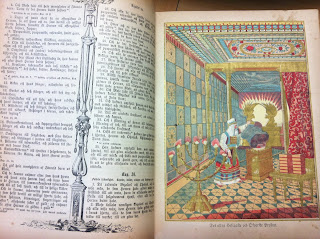 |
| The Pioneers' Crafts |
The mood was celebratory, a fine end to a fine session. It was my last day too. I was rushing to finish my Swedish sites project before I ended for the summer. Using the museum's database, I was able to find a number of pictures of sites that were long gone or that I wasn't able to visit. I put on my trusty cotton muslin gloves and scanned the photos at 600 pixels. I was relieved to find two beautiful photographs of the Salem Lutheran Church, one exterior and one interior
(I will add these to the entries on Swedish-American churches). I was able to obtain a number of lovely photos from a brochure on the Swedish Club. Looking through booklet, I was amazed at how many services the Club offered. There were bars, dining areas, a restaurant, administrative rooms, a music room, and lovely lounging areas. It is a shame the organization no longer exists.
The format of my project is as follows: a photo or several photos of the landmark, followed by its title and location, then a short description. All this must fit on a word document, because they will be printed, put in plastic sleeves, and placed in a binder that will be on display in the museum. The file will also be sent to Riksföreningen Sverigekontakt, or the National Society of Sweden Contact. Their website, http://www.sverigekontakt.se/?id=8, lists the various Swedish landmarks around the world. The museum has access to the rest of the photos if they wished to send in larger versions. With that, I ended my summer internship. The time I spent at the Swedish American Museum gave me a better perspective on educating the public with pieces of history. I will definitely be back to visit or volunteer at the museum.
Farväl!


















































